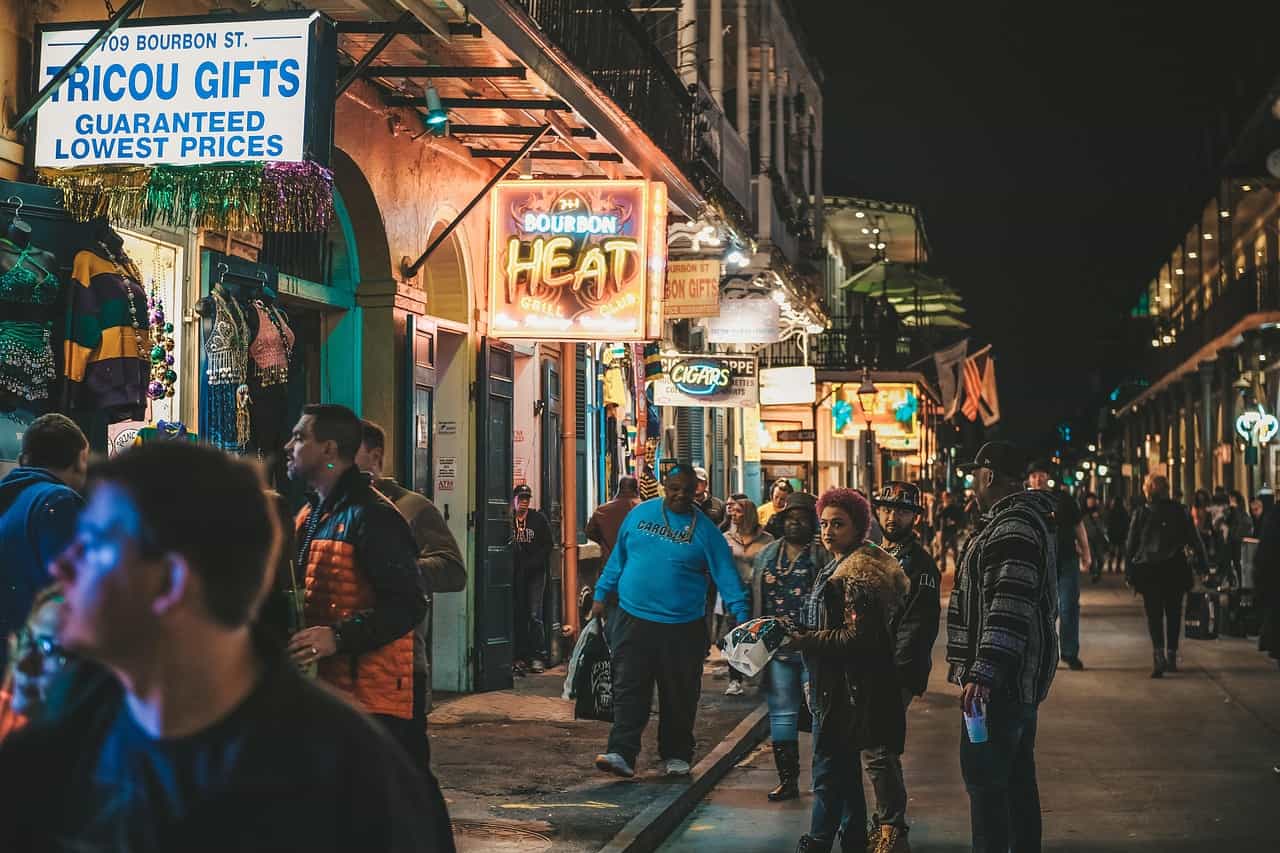Introduction to Asian Street Fashion
Asian street fashion has taken the global style scene by storm, infusing a vibrant and dynamic energy into the clothing world. From Tokyo’s Harajuku district to Seoul’s bustling streets, Asian streetwear has become synonymous with boldness, creativity, and an unmatched sense of individuality. With its distinct fusion of traditional aesthetics and contemporary influences, it’s no wonder that this unique fashion movement is making waves worldwide.
In recent years, Asian streetwear brands have experienced a meteoric rise in popularity. Labels like A Bathing Ape (BAPE), Off-White c/o Virgil Abloh, and Supreme have gained cult-like followings not only in their home countries but also among fashion enthusiasts across the globe. These brands embody the essence of Asian street style – edgy designs that push boundaries while paying homage to cultural roots.
The influence of Asian street fashion on global trends cannot be overstated. It has breathed new life into an industry sometimes criticized for needing to be more active and inspired. By introducing fresh perspectives and unconventional approaches to dressing, these emerging designers are revolutionizing what it means to be fashionable.
However, with its growing influence comes meaningful discussions surrounding cultural appropriation versus appreciation within fashion. As Western designers draw inspiration from Asian motifs and symbols without fully understanding their significance or context, questions arise about respecting cultural heritage while embracing diversity in design.
So, what exactly makes up Asian street style? From oversized silhouettes inspired by Japanese avant-garde to Korean beauty trends influencing makeup choices worldwide, countless elements define this trend-setting aesthetic. Join us as we delve deeper into how social media platforms have spread this phenomenon far beyond Asia’s borders and examine how these exciting developments have impacted Western fashion.
The rise of Asian streetwear brands
The rise of Asian streetwear brands has been nothing short of remarkable. These brands have burst onto the scene with their unique aesthetics and distinctive designs, capturing the attention of fashion enthusiasts worldwide. What sets them apart is their ability to fuse traditional Asian elements with modern street style seamlessly.
One key player in this movement is Japan’s A Bathing Ape (BAPE), which gained popularity in the early 2000s for its bold graphics and signature camo print. Today, BAPE remains at the forefront of Asian streetwear, collaborating with global brands like Adidas and Nike.
Another notable brand is South Korea’s KITHN Seoul, known for its minimalist yet edgy aesthetic. With an emphasis on clean lines and innovative silhouettes, KITHN Seoul has garnered a dedicated following locally and internationally.
Meanwhile, China’s Li-Ning has made waves with its avant-garde designs that infuse traditional Chinese motifs into contemporary sportswear. This fusion of East meets West creates a unique visual expression that resonates across cultures.
These rising Asian streetwear brands influence global trends and challenge Western dominance in the industry. They bring fresh perspectives and alternative narratives to fashion by celebrating cultural heritage through clothing.
In recent years, there has been ongoing discourse surrounding cultural appropriation versus appreciation within the fashion world. While it is important to acknowledge these concerns and avoid appropriating sacred symbols or traditions without proper understanding or respect, it is equally essential to appreciate diverse influences that can foster cross-cultural dialogue and understanding.
Asian streetwear often combines vibrant colors, intricate patterns, unconventional layering techniques, oversized fits, deconstructed garments, and experimental graphic prints – all contributing factors to its increasing popularity around the globe. The fearless blending of different styles allows individuals to express their uniqueness while embracing various cultural influences simultaneously.
Influence on global trends
Asian street fashion has undeniably made a significant impact on global trends. Its unique blend of traditional elements and modern aesthetics has captured the attention of fashion enthusiasts worldwide. These vibrant cities have become epicenters for innovative and boundary-pushing styles from Tokyo to Seoul and Shanghai to Bangkok.
One reason for the influence of Asian street fashion is the rise of homegrown brands that have garnered international recognition. Labels like Off-White, A Bathing Ape, and Comme des Garçons have gained cult-like followings outside of Asia with their edgy designs and fearless approach to fashion.
Furthermore, cultural appropriation versus appreciation has been an ongoing debate within the industry. Designers and consumers must understand and respect the origins behind some aspects of Asian street style while avoiding commodifying or disrespecting them.
Regarding popular elements in Asian street style, oversized silhouettes, gender-neutral clothing choices, and bold patterns such as florals or animal prints are commonly seen. Mixing high-end designer pieces with vintage finds or affordable fast-fashion items is also prevalent in this scene.
Social media platforms like Instagram have played a crucial role in spreading the reach of Asian streetwear globally. Influencers from different parts of Asia showcase their unique personal styles through captivating visuals that inspire individuals worldwide.
The impact on traditional Western style must be addressed, too. Designers from Europe and America often draw inspiration from Asian culture when creating their collections, incorporating influences such as kimono-inspired cuts or martial arts into their designs.
The fusion between East and West creates an exciting dynamic where diverse cultures intersect within the realm of style. Embracing diversity enriches our wardrobes and fosters a more inclusive industry where everyone can feel represented.
Cultural appropriation and appreciation in fashion
Cultural appropriation and appreciation in fashion is a topic that has sparked much debate in recent years. With the rise of Asian street fashion, it’s essential to consider how different cultures are represented and interpreted within the industry.
Various cultures have always influenced fashion, with designers taking inspiration from different traditions and styles. The distinction between cultural appropriation and appreciation is, nevertheless, subtle. Cultural appreciation involves understanding and respecting the significance behind specific garments or accessories, while cultural appropriation often involves borrowing elements without acknowledging their origins or misrepresenting them.
In Asian street style, individuals must educate themselves about the cultural significance of specific clothing items or trends before incorporating them into their style. This includes understanding traditional meanings, symbols, or rituals associated with specific garments.
Additionally, collaboration and representation are vital factors in avoiding cultural appropriation. Giving credit where credit is due can help promote inclusivity within the industry by recognizing and supporting Asian designers who have contributed to global style trends.
It’s also essential for consumers to be mindful of their choices when participating in Asian street fashion trends. Understanding the history behind these styles can lead to a more respectful approach toward embracing diversity in fashion.
Cultural appreciation should always precede cultural appropriation to create an inclusive industry that respects and celebrates diverse influences worldwide. Educating ourselves on different cultures’ histories and traditions ensures that our love for Asian street style contributes positively to global trends without causing harm or offense.
Popular elements of Asian street style
Asian street style is known for its bold, eclectic, and innovative fashion choices that have been making waves in the global fashion scene. From Tokyo to Seoul, cities across Asia buzz with unique streetwear trends, setting the bar high for fashion enthusiasts worldwide.
One popular element of Asian street style is vibrant colors and eye-catching patterns. Bright hues like neon pink, electric blue and fiery red can often be seen adorning outfits on the streets of Asian cities. These bold color choices add a playful and energetic vibe to any ensemble.
Another critical aspect of the Asian street style is layering. Layering different garments adds visual interest and allows individuals to experiment with various textures and silhouettes. It’s common to see oversized jackets paired with cropped tops or multiple shirts worn together to create a stylish layered look.
Accessories play a crucial role in completing an Asian street-style outfit. Statement accessories such as chunky sneakers, oversized sunglasses, and quirky hats are commonly used to add personality and flair. Mixing different accessory styles is encouraged to create a unique aesthetic.
In addition, there is a strong emphasis on mixing traditional elements with modern pieces in Asian street style. Traditional garments like kimonos or cheongsams may be reinterpreted by incorporating contemporary fabrics or adding unexpected details for an updated twist.
Asian street style also embraces gender fluidity, allowing individuals to freely express themselves through clothing choices without adhering strictly to societal norms about what men or women should wear.
The influence of anime and manga culture can also be observed in many aspects of Asian street fashion – from graphic prints featuring beloved characters to hairstyles inspired by iconic anime figures.
These popular elements contribute to the dynamic nature of Asian street style, continually pushing boundaries and inspiring creativity within the global fashion community.
How social media has played a role in spreading the trend
Social media has undoubtedly played a significant role in spreading the trend of Asian street fashion across the globe. Platforms like Instagram, TikTok, and YouTube have allowed individuals to showcase their unique style and inspire others.
Through these platforms, fashion enthusiasts can quickly discover and follow Asian influencers known for their bold and innovative streetwear looks. These influencers often collaborate with brands or create their lines, further amplifying the reach of Asian street fashion.
Moreover, social media allows instant sharing of photos and videos showcasing different elements of Asian street style. This immediate accessibility to visual content enables people worldwide to learn about new trends and incorporate them into their wardrobes.
The interactive nature of social media also encourages dialogue within the fashion community. Users can comment on posts and ask questions about styling techniques or where to purchase specific items, fostering a sense of community among fans of Asian streetwear.
Additionally, social media influencers have become influential tastemakers who shape global trends. Their immense following allows them to influence not only individual consumers but also mainstream brands that seek collaborations or partnerships with famous Asian streetwear figures.
Impact on Traditional Western Fashion
Asian street fashion has significantly impacted traditional Western fashion, infusing it with fresh and innovative styles. The influence can be seen in various aspects of Western fashion, from runway collections to street-style looks.
One area where Asian street fashion has made its mark is using bold colors and patterns. Traditional Western fashion often favored more subdued tones, but Asian streetwear brands have introduced vibrant hues and intricate prints that add a playful and eye-catching element to outfits.
Another noticeable impact is the incorporation of unique silhouettes and unconventional designs. Western fashion has typically stuck to more structured and tailored pieces, but Asian street style embraces oversized shapes, layering techniques, and asymmetrical cuts. This infusion of creativity has given rise to new possibilities for self-expression within traditional Western clothing.
Asian streetwear aesthetics have also influenced accessories. Statement accessories such as chunky sneakers, bucket hats, fanny packs, and face masks have gained popularity in casual and high-end designer collections. These additions bring an edgy yet functional twist to traditional Western ensembles.
Furthermore, Asian streetwear’s focus on comfort has challenged the notion that style requires sacrificing comfort. With the rise of athleisure trends inspired by Japanese sportswear brands like Comme des Garçons Play or Yohji Yamamoto’s Y-3 line for Adidas, comfortable garments like oversized hoodies or loose-fitting pants are now embraced even in more formal settings.
The influence of Asian street fashion on traditional Western attire reflects a broader shift towards inclusivity in the industry. It encourages experimentation with different styles while celebrating cultural diversity. By embracing these influences rather than appropriating them without context or understanding their significance, we can create a more inclusive space where everyone feels represented in fashion.
Conclusion: Embracing diversity in fashion for a more inclusive industry
The dynamic fashion industry depends on self-expression, creativity, and innovation. In recent years, Asian street fashion has significantly impacted global trends. This merging of East and West has created a more inclusive and diverse industry.
Through the rise of Asian streetwear brands, we have seen a shift in traditional Western fashion norms. Designers from countries such as Japan and South Korea have introduced unique styles that challenge conventional beauty standards. The emphasis on individuality and boldness has captured the attention of fashion enthusiasts worldwide.
Recognizing that this cross-cultural exchange should be approached with respect for cultural appropriation versus appreciation is essential. While it’s exciting to see elements of Asian street style incorporated into mainstream fashion, it is crucial to acknowledge their origins and give credit where it’s due.
Some popular elements of Asian street style include oversized silhouettes, vibrant colors, graphic prints, and experimental layering techniques. These distinct features bring a refreshing energy to the fashion scene by breaking away from traditional Western aesthetics.
Social media platforms have played a pivotal role in spreading the trend globally. Platforms like Instagram have given rise to influential Asian streetwear influencers who showcase their unique sense of style while also promoting cultural understanding.
The impact of Asian street fashion goes beyond just influencing global trends; it has paved the way for greater diversity within the industry itself. Fashion brands increasingly recognize the importance of inclusivity by featuring models from different ethnic backgrounds and embracing various cultural influences in their designs.
Embracing diversity in fashion promotes inclusivity and allows for greater creativity and inspiration within the industry. The fusion between Eastern and Western styles offers endless possibilities for self-expression while fostering cultural understanding among individuals worldwide.
FAQS
1. How has Asian street fashion influenced global trends?
Asian street fashion has significantly impacted global trends, inspiring and influencing people’s dress. With its unique blend of traditional elements and modern aesthetics, Asian street fashion offers a fresh perspective that resonates with individuals seeking to express their style.
2. Is cultural appropriation an issue in the adoption of Asian streetwear?
Cultural appreciation is more appropriate than cultural appropriation when embracing Asian street fashion. Individuals and brands must understand and respect the cultural significance behind certain styles or symbols before incorporating them into their designs or outfits.
3. What are some popular elements of Asian street style?
Some popular elements of Asian street style include oversized silhouettes, vibrant colors, mixing high-end designer pieces with affordable basics, layering techniques, bold prints and patterns such as florals or animal motifs, statement accessories like chunky sneakers or bucket hats, as well as a strong emphasis on individuality and self-expression.
4. How has social media played a role in spreading the trend?
Social media platforms have played a crucial role in spreading the influence of Asian street fashion globally. Platforms like Instagram have allowed stylish individuals from East Asia to showcase their unique style to audiences worldwide. This exposure has increased awareness and allowed for cross-cultural exchange and inspiration among fashion enthusiasts across different continents.
5. What impact does Asian streetwear have on traditional Western fashion?
Asian streetwear’s influence on traditional Western fashion can be seen through collaborations between international brands and emerging Asian designers. These partnerships bring together diverse perspectives, resulting in innovative collections that push boundaries and challenge conventional ideas about what constitutes contemporary clothing.










